Marvel Cinematic Universe
Assembling A Universe
Agent's of SHIELD has not only been a mediocre show, but it also has had a scattered airing schedule through the season. This week instead of a build up to AoS best episode yet, we get a look back at the Marvel Universe and how Phase 1 has gone and where Phase 2 is going. It's a documentary on the commendable efforts the comic company went through to bring to life their so called 'B' Team.
Yet you cannot help but notice the efforts of Kevin Feige and Co. in making this another promotional push for not only the Captain America sequel but Phase 2 of the film universe as a whole.
Still for the uninitiated, this can be one hell of an insight into some interesting tidbits about the companies work. Especially included are some great nods on some of the smaller and all but forgotten aspects of the film universe, with writers making sense of plots, the genre mix the films have seen and how from the very beginning there was an insight to where everything was headed at least until the end of Phase 3.
Even then I would recommend it to the fan who knows everything about the Marvel Cinematic Universe (such as me), simply because the thought process that the studio put into the films is a wonder to behold.
There's no denying that Marvel Studios movies are true blue superhero movies, simply because they aren't afraid to bring a comic to life as possible as it can be. They get the costumes right, are the most faithful in a superfluous as well as a thematic sense to their source and their what comics should be; exuberant, vibrant, daring and above all else enjoyable.
So kudos to the Marvel Juggernaut (pun intended) and let's see what my scattered thought caught of interest...
Beyond the whole highlights introduction package, the documentary special begins at the 2006 San Diego Comic Con. The clip shows the Marvel Studios heads, specifically Kevin Feige highlighting how their hope is to see their films build toward an Avengers team up.
The initial idea was conceptualized as Marvel Studios goes to work. By 2005, Marvel Comics had sold film rights to a number of their characters.

As you can see with the above infographic, they were left with only a plethora of B-Level characters. By luck or by insight, the heroes in their bag turned out to form The original Avengers. Prior to 2004, The Avengers was a steady and critically acclaimed book yet lacked the exposure to be the best in Marvel.
Even then I would recommend it to the fan who knows everything about the Marvel Cinematic Universe (such as me), simply because the thought process that the studio put into the films is a wonder to behold.
There's no denying that Marvel Studios movies are true blue superhero movies, simply because they aren't afraid to bring a comic to life as possible as it can be. They get the costumes right, are the most faithful in a superfluous as well as a thematic sense to their source and their what comics should be; exuberant, vibrant, daring and above all else enjoyable.
So kudos to the Marvel Juggernaut (pun intended) and let's see what my scattered thought caught of interest...
Beyond the whole highlights introduction package, the documentary special begins at the 2006 San Diego Comic Con. The clip shows the Marvel Studios heads, specifically Kevin Feige highlighting how their hope is to see their films build toward an Avengers team up.
The initial idea was conceptualized as Marvel Studios goes to work. By 2005, Marvel Comics had sold film rights to a number of their characters.

Note Namor and Man Thing have reverted back to Marvel Studios
As you can see with the above infographic, they were left with only a plethora of B-Level characters. By luck or by insight, the heroes in their bag turned out to form The original Avengers. Prior to 2004, The Avengers was a steady and critically acclaimed book yet lacked the exposure to be the best in Marvel.
In 2004, with Brian Michael Bendis taking the helm, The Avengers turned into A-Listers when it added Spider-Man and Wolverine to their ranks. This caused massive sales with the risk of alienating purists who felt the two shouldn't have joined the team, so they're happy when The Avengers movie sans Spidey and Wolvie came along.
Back to topic
It would have been interesting for the feature to go deeply into the issues of the rights and their initial plans on paper, but instead the documentaries main feature begins with the first movies of Marvel's Phase 1.
The documentary continues to look at the early working plans. Marvel Studios was looking to begin with two franchises, and no particular in house universe plan in motion. Unfortunately or fortunately the bank disapproved the notion, until Marvel was forced to pull the films together into one universe. The studio got financed, and now we have a Marvel Cinematic Universe.
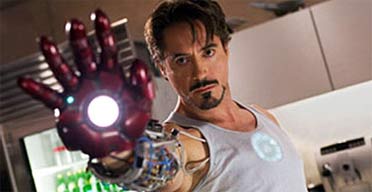

The first character chosen as Kevin Feige notes was Hulk. After the thoroughly dismissed Hulk, Universal gave the rights for the A-List character and non-Avenger (though he was a founding member) to Marvel. Feige notes that there was a lot they could say with the character that hadn't been said, and so they put it into production.
Second came Iron Man with the idea that he was an interesting character and one rooted in realism, something comic book movies to date had attached themselves to.
A lot of the feature takes time at the Iron Man part, because of how important it was to the studio. Jon Favreau makes not of his hiring as director, where Feige points out they needed as a studio a bit of control in their vision but also couldn't impose on the director.
The studio points out its struggles to find writers considering their world building ideas taking shape and possibly forming the script's base. Control was a hard thing to strive for considering this was a first time Independent film studio looking to make a blockbuster franchise right out of the bat.
With unwanted rights coming back from all sides, Marvel was adamant on building their world. Lucky for them director Jon Favreau brought his sublime vision to the film yet kept constant to where the studio wanted to begin from.
The most important factor, casting Iron Man. In comes Robert Downey Jr.
A lot of praise is given to the actor and vice versa on what would be known as Marvel's big risk. Feige points out how Downey shaped the idea of Stark for the film. Favreau notes how his casting changed the perception of the studio and film, giving it the chance to rope in Oscar Winner Gwyneth Paltrow among others.
Marvel also doesn't shy away from looking at Downey's past and how in a way it informed why him playing Stark made perfect sense. More Con footage shows Downey stating that destiny is responsible for him playing a man who hits bottom and rises like a Phoenix, new born. He goes on to thank Feige and co for making his career, a heartfelt scene that exemplifies a new dimension of the man.
Clark Gregg makes not of his role as a wink to the comic fans on maybe things to come or just for fun. Which takes us to Samuel L Jackson.

Clark Gregg makes not of his role as a wink to the comic fans on maybe things to come or just for fun. Which takes us to Samuel L Jackson.

They also go into detail about Sam Jackson's cameo scene, and what it really meant. Feige notes the risk to it and therefore placement after the credits, simply because if they failed to deliver with this movie then those would remain empty promises. Jackson comments on his involvement, specifically noting how he read The Ultimates (an alternate version of The Avengers, which form the template for the films) where Nick Fury looked exactly like him and how that made his casting possible.
The second step was going to Hulk. Not much is played on The Incredible Hulk due to Edward Norton's presence in the film, this is of course because of Norton and Marvel's sour relationship causing his re-casting in The Avengers.
Here the idea of the post credits was finalized and tooled as a thread of continuity within the separate franchises.
Onto Iron Man 2, and Feige, Favreau point out how this film blew up the doors for SHIELD and The Avengers to take place. Scarlett Johansson is featured, as she points out her interest in the role when initialized.
Sam Jackson goes into detail the importance of Howard Stark, not only to the creation of SHIELD and the idea of The Avengers but to the film. John Slattery's one day shoot is made note of as a critical piece to unlocking the Marvel Universe, it makes sense to give the father of Iron Man (the man that began the Marvel Cinematic Universe) the credit for bringing to life the idea of a wider universe in place. A revelation that Iron Man 2 was a hint as to how far the movies have been planned, with space coming into question.
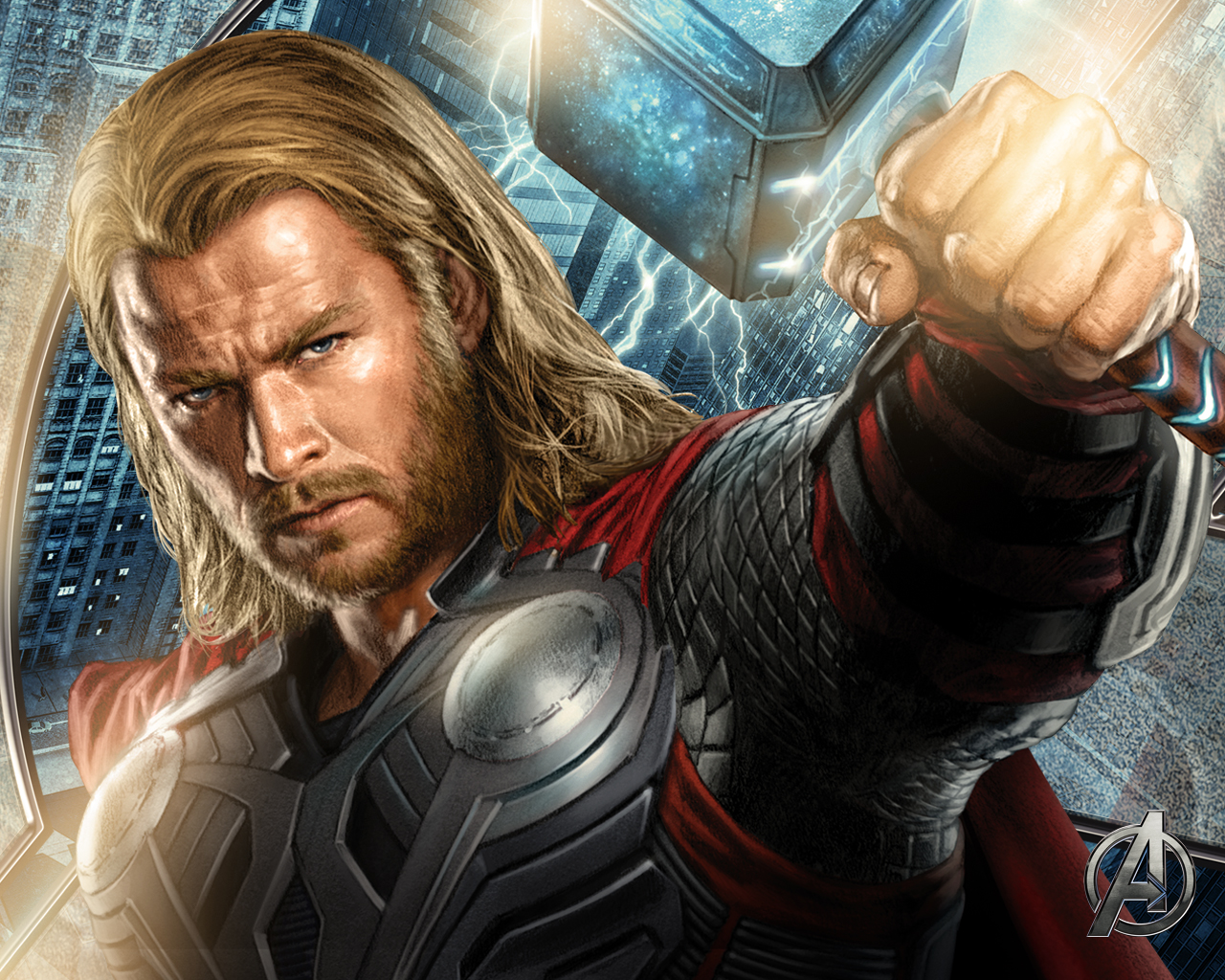
Then they go to their biggest risk yet; Thor. Realism had somehow formed Iron Man, and he had been grounded but everybody notes how Thor was a different ballgame altogether. Chris Hemsworth who plays Thor decodes this by making note of Marvel's famous brand of humor. He points it how it relaxing the audience and allows them to accept the more fantasy elements of the film.
Hawkeye's cameo is another main attraction to Thor, where Gregg explains why his motivation to move further onwards from Iron Man 2 came in the form of Jeremy Renner playing Hawkeye in the next film.
This seemed a bit like the studio trying to appease Renner who has been vocal about his exclusion from much of the run time of The Avengers, even though Gregg himself comes of as genuine.

Best thing to see during this section is how at the core, the importance of both director Kenneth Branagh and actor Tom Hiddleston isn't forgotten. Branagh as shown brought gravitas to the picture, and him and the writers really nailed the aspect of the two characters Thor and Loki entwined together in order for them to develop.
With that Hiddleston's performance is marked as a turnaround for the studio, and completing the idea of The Avengers as a whole.
Note that The Avengers was written before both Thor and Captain America, yet initial plans were not to feature Loki as heavily as they became. Red Skull was set to join him early on as a major villain.
The link between Thor and Captain America is noted as the introduction to something much bigger with the Tesseract, a hint to what Avengers would be about and where the franchise is headed. The team don't shy away from calling it a basic MacGuffin.
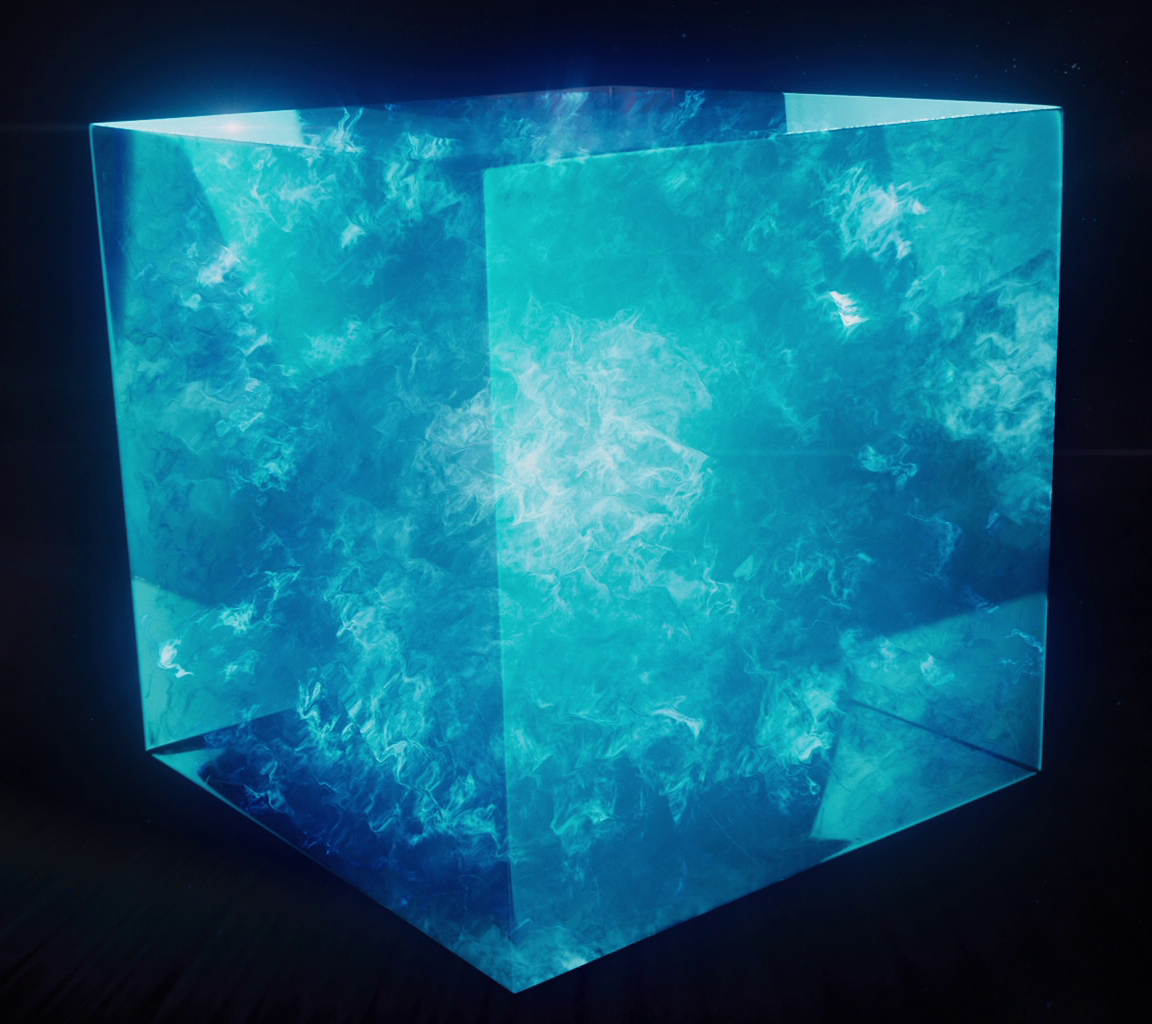
Sadly the documentary failed to mention much about either the Tesseract or even the Gems as a whole, leaving a lot of unwanted questions about Phase 3.
More is made about Captain America's importance in creating links between the characters of each films through time. Feige delves into the ideas of the Ultimates (The Avengers of the Marvel Ultimate Universe) and how they're whole concept informed Phase 1. Each hero besides Thor, is a different method in re-creating the super soldier serum or something similar for modern day.
Hence it altogether brought Howard and to an extent Tony Stark to look into hardware, while Bruce Banner believed the code to cracking Erskine's formula was in gamma radiation.
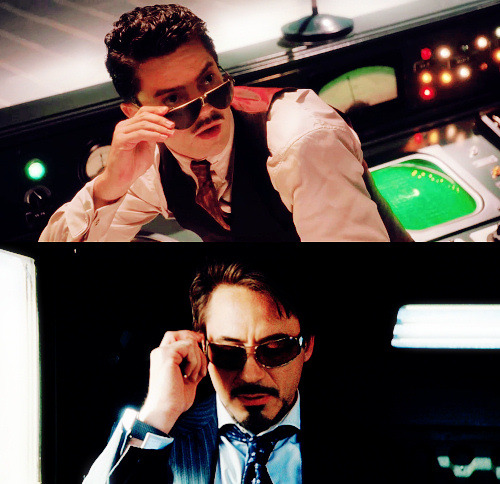
They then go on to make a discussion I was really happy to hear; the involvement and importance of Dominic Cooper, who would play the past version of Howard Stark in the Captain America. Cooper's role wasn't given the highlight it should have gotten before, but here the feature rectifies this mistake.
Downey specifically discusses how Cooper does something admirable. While everyone else talks about how Cooper needed to and does bring out shades of Downey's portrayal as his son Tony Stark, yet makes the character of Howard his own.
I've always maintained this, whenever Robert Downey Jr. decides to hang up the boots, Dominic Cooper (albeit a bit weird due to him being the father) would make the perfect replacement as Tony Stark.
Finally the feature comes to a vital part, the big risk and the reason for the Marvel Cinematic Universe's existence; The Avengers.

SHIELD gets the spotlight for a bit here, especially the involvement of the characters and the integration of the whole organization onto the picture. Their importance isn't understated, as they become the sort of glue that holds this makeshift team together.
Bruce Banner and the Hulk particularly are made mention of, the specific style the Mark Ruffalo brought to the dynamic and his performance in the film is credited. Hulk's motion capture and VFX work churns a good discussion regarding how it helped define the film much more.
A big question is thrown in, What are they Avenging?

Obviously the studio forgets to mention the initial plot hole, where their being called The Avengers because of the initiative. Back then it was never made sense of what they're Avenging, but Whedon manages to bring a thematic sense to the team name.
Clark Gregg reiterates his discussions with Whedon about the title and Whedon's information to him that his character will be the one Avenged. Gregg is the highlight of much of this feature let alone segment, he genuinely enjoys playing the character and was ecstatic for a surprisingly huge part in the film allowing him to interact with the whole cast.
He then remembers his depressed reactions towards his impending death from the franchise. It was really fun to see how heartfelt this experience had been for the actor.
Well as anyone knows the sacrifice paid off, and The Avengers became an all time blockbuster. Clippings cut too news reports on The Avengers success at the box office, confirming that this documentary is in some way an advertise for Marvel Studios.
Many guests on the feature point out how in one way Marvel Studios and its interconnected set of films has influenced the takeover of pop culture by nerd culture.
The big disappointment once again was Feige and Co. hesitance on delving to much into their ideas for the future of the films. No mention was made of how Thanos changes the whole scope of their films.

Instead we got surprising mention on The Avengers being Thor's story simply because it's a direct sequel for it's lead characters.
Nobody told Whedon that since Thor didn't get much screen time in the film. SARCASM.
Feige then goes on to talk about Phase 2 and how he envisioned each Phase ending with an Avengers film. This unfortunately according to everyone meant, retooling solo films such as continuity remains yet there is a reason to them working alone and the film playing out.

Solo movies needed that something more to work.
More than action, it was and is the growth of character that made sense. Stakes become personal and writers are forced to add development to their protagonists and their supporting cast.
Iron Man beyond being the first character from Phase 1 was the best bet, because he was a man in a tin can fighting aliens alongside a monster, a man out of time and a god. For obvious reasons Iron Man 3 is barely talked off, Marvel avoids stirring controversy on the Mandarin issue that plagued the critical aspect of the film.
They don't even acknowledge how genius the twist was, both Shane Black and Drew Pearce are conspicuously absent on this portion.
Even Thor 2 is barely gone into. The writers make mention of how vital it is that both Thor and Loki be developed as characters and how the film intends to complete their arc that began with the first film and took a new step in The Avengers.
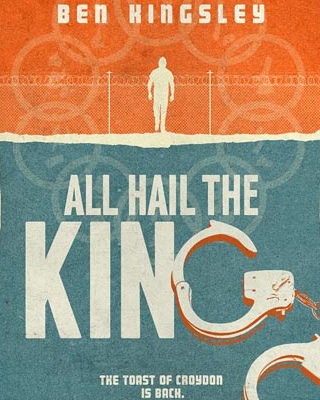
This then gets into one of the most exciting portions and insightful ones for casual fans, the studio speaks about the short films they made attached to DVD copies of the films since the first Thor. The Shorts take their name from Marvel comics One Shot books, and allow writers to explore smaller characters within the universe.
The first two were focused on Agent Coulson. His adventure 'A Funny Thing Happened on the Way To Thor's Hammer' highlights the likability of Clark Gregg and Agent Coulson, the director notes how he blew up 80% of his budget on a small action sequence in order to give reason to Coulson's importance to SHIELD.
His second 'The Consultant' would then be just a talky film with the reintroduction of Maximilo Hernandez as Agent Sitwell discussing some important threads regarding The Avengers. Mentions of World Security Council and Abomination from the Hulk film are made, the secret shady government people want Abomination in The Avengers Initiative. It also ties itself with the grating and jarring post credits scene in Incredible Hulk where Tony Stark meets General Ross.
All in all this film and even the first are prime examples of why Marvel should air these short films during the screening of their main features, it would make sense of a lot of smaller plot points within the bigger films and not confuse audiences.
Other interesting supporting characters are also developed. A short with Peggy Carter from Captain America, acts as the backdoor pilot for the upcoming Agent Carter series. While Drew Pearce fixed up his mistakes from Iron Man 3.
In a hilarious sequence we see Trevor Slattery enjoying the perks of being a celebrity in prison. Pearce here has an interview in set up in jail, where the reporter played by Scoot McNairy reveals that the Ten Rings are pissed and so is The Mandarin!
He leaves the Mandarin open for adaptation for the next director and Iron Man film. The short also includes a cameo by Justin Hammer the villain of the second Iron Man, played by the stellar Sam Rockwell.
They then enter the aspect of TV. As a method to build more character for many a players and mine the comics history for obscure and lesser known characters who don't warrant a feature film.

Agents of SHIELD is born, and is played up as this small screen version of Avengers. A lot is said about the series revelations on the idea of 'Mutants' (without the M word spoken, since Fox has those rights). Not to forget that Thor according to SHIELD secret data wasn't the first one of super being to come to Earth.
It felt more like a spotless advertise though, for a show that has barely made any marks. Not to mention at the same time the studio highlights how it's banking on comic characters to elevate it, specifically advertising those the show has already featured.
Funny considering how AoS would have gained more from airing again this week, it would have kept its new found momentum going. Rather AoS's shoddy scheduling and early low point episodes has made it a struggle to watch, especially considering how I am intent on seeing each bit of The Marvel Cinematic Universe.
All in all, this part of the documentary is insightful but not really interesting as such.
It finally comes round to what everyone is waiting for, the future of the Marvel Movies. So it was a disappointment to see that a documentary that is part ad doesn't do much to promote it's coming films this year beyond a few snippets.

Captain America 2 gets some short clips but nothing much we haven't seen, heck even less. However once again they do point out how Cap can be a link to not only Avengers 2 but Phase 3 as well.





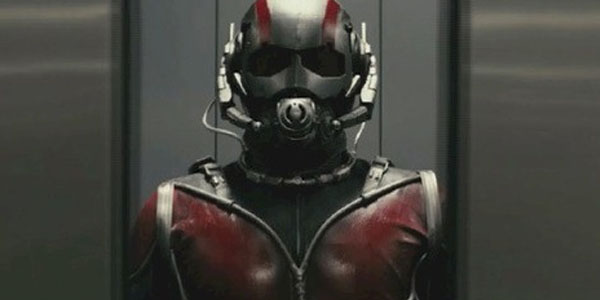

The second step was going to Hulk. Not much is played on The Incredible Hulk due to Edward Norton's presence in the film, this is of course because of Norton and Marvel's sour relationship causing his re-casting in The Avengers.
Here the idea of the post credits was finalized and tooled as a thread of continuity within the separate franchises.
Onto Iron Man 2, and Feige, Favreau point out how this film blew up the doors for SHIELD and The Avengers to take place. Scarlett Johansson is featured, as she points out her interest in the role when initialized.
Sam Jackson goes into detail the importance of Howard Stark, not only to the creation of SHIELD and the idea of The Avengers but to the film. John Slattery's one day shoot is made note of as a critical piece to unlocking the Marvel Universe, it makes sense to give the father of Iron Man (the man that began the Marvel Cinematic Universe) the credit for bringing to life the idea of a wider universe in place. A revelation that Iron Man 2 was a hint as to how far the movies have been planned, with space coming into question.

Then they go to their biggest risk yet; Thor. Realism had somehow formed Iron Man, and he had been grounded but everybody notes how Thor was a different ballgame altogether. Chris Hemsworth who plays Thor decodes this by making note of Marvel's famous brand of humor. He points it how it relaxing the audience and allows them to accept the more fantasy elements of the film.
Hawkeye's cameo is another main attraction to Thor, where Gregg explains why his motivation to move further onwards from Iron Man 2 came in the form of Jeremy Renner playing Hawkeye in the next film.
This seemed a bit like the studio trying to appease Renner who has been vocal about his exclusion from much of the run time of The Avengers, even though Gregg himself comes of as genuine.

Best thing to see during this section is how at the core, the importance of both director Kenneth Branagh and actor Tom Hiddleston isn't forgotten. Branagh as shown brought gravitas to the picture, and him and the writers really nailed the aspect of the two characters Thor and Loki entwined together in order for them to develop.
With that Hiddleston's performance is marked as a turnaround for the studio, and completing the idea of The Avengers as a whole.
Note that The Avengers was written before both Thor and Captain America, yet initial plans were not to feature Loki as heavily as they became. Red Skull was set to join him early on as a major villain.
The link between Thor and Captain America is noted as the introduction to something much bigger with the Tesseract, a hint to what Avengers would be about and where the franchise is headed. The team don't shy away from calling it a basic MacGuffin.

Sadly the documentary failed to mention much about either the Tesseract or even the Gems as a whole, leaving a lot of unwanted questions about Phase 3.
More is made about Captain America's importance in creating links between the characters of each films through time. Feige delves into the ideas of the Ultimates (The Avengers of the Marvel Ultimate Universe) and how they're whole concept informed Phase 1. Each hero besides Thor, is a different method in re-creating the super soldier serum or something similar for modern day.
Hence it altogether brought Howard and to an extent Tony Stark to look into hardware, while Bruce Banner believed the code to cracking Erskine's formula was in gamma radiation.

They then go on to make a discussion I was really happy to hear; the involvement and importance of Dominic Cooper, who would play the past version of Howard Stark in the Captain America. Cooper's role wasn't given the highlight it should have gotten before, but here the feature rectifies this mistake.
Downey specifically discusses how Cooper does something admirable. While everyone else talks about how Cooper needed to and does bring out shades of Downey's portrayal as his son Tony Stark, yet makes the character of Howard his own.
I've always maintained this, whenever Robert Downey Jr. decides to hang up the boots, Dominic Cooper (albeit a bit weird due to him being the father) would make the perfect replacement as Tony Stark.
Finally the feature comes to a vital part, the big risk and the reason for the Marvel Cinematic Universe's existence; The Avengers.

SHIELD gets the spotlight for a bit here, especially the involvement of the characters and the integration of the whole organization onto the picture. Their importance isn't understated, as they become the sort of glue that holds this makeshift team together.
Bruce Banner and the Hulk particularly are made mention of, the specific style the Mark Ruffalo brought to the dynamic and his performance in the film is credited. Hulk's motion capture and VFX work churns a good discussion regarding how it helped define the film much more.
A big question is thrown in, What are they Avenging?

Obviously the studio forgets to mention the initial plot hole, where their being called The Avengers because of the initiative. Back then it was never made sense of what they're Avenging, but Whedon manages to bring a thematic sense to the team name.
Clark Gregg reiterates his discussions with Whedon about the title and Whedon's information to him that his character will be the one Avenged. Gregg is the highlight of much of this feature let alone segment, he genuinely enjoys playing the character and was ecstatic for a surprisingly huge part in the film allowing him to interact with the whole cast.
He then remembers his depressed reactions towards his impending death from the franchise. It was really fun to see how heartfelt this experience had been for the actor.
Well as anyone knows the sacrifice paid off, and The Avengers became an all time blockbuster. Clippings cut too news reports on The Avengers success at the box office, confirming that this documentary is in some way an advertise for Marvel Studios.
Many guests on the feature point out how in one way Marvel Studios and its interconnected set of films has influenced the takeover of pop culture by nerd culture.
The big disappointment once again was Feige and Co. hesitance on delving to much into their ideas for the future of the films. No mention was made of how Thanos changes the whole scope of their films.

Instead we got surprising mention on The Avengers being Thor's story simply because it's a direct sequel for it's lead characters.
Nobody told Whedon that since Thor didn't get much screen time in the film. SARCASM.
Feige then goes on to talk about Phase 2 and how he envisioned each Phase ending with an Avengers film. This unfortunately according to everyone meant, retooling solo films such as continuity remains yet there is a reason to them working alone and the film playing out.

Solo movies needed that something more to work.
More than action, it was and is the growth of character that made sense. Stakes become personal and writers are forced to add development to their protagonists and their supporting cast.
Iron Man beyond being the first character from Phase 1 was the best bet, because he was a man in a tin can fighting aliens alongside a monster, a man out of time and a god. For obvious reasons Iron Man 3 is barely talked off, Marvel avoids stirring controversy on the Mandarin issue that plagued the critical aspect of the film.
They don't even acknowledge how genius the twist was, both Shane Black and Drew Pearce are conspicuously absent on this portion.
Even Thor 2 is barely gone into. The writers make mention of how vital it is that both Thor and Loki be developed as characters and how the film intends to complete their arc that began with the first film and took a new step in The Avengers.

This then gets into one of the most exciting portions and insightful ones for casual fans, the studio speaks about the short films they made attached to DVD copies of the films since the first Thor. The Shorts take their name from Marvel comics One Shot books, and allow writers to explore smaller characters within the universe.
The first two were focused on Agent Coulson. His adventure 'A Funny Thing Happened on the Way To Thor's Hammer' highlights the likability of Clark Gregg and Agent Coulson, the director notes how he blew up 80% of his budget on a small action sequence in order to give reason to Coulson's importance to SHIELD.
His second 'The Consultant' would then be just a talky film with the reintroduction of Maximilo Hernandez as Agent Sitwell discussing some important threads regarding The Avengers. Mentions of World Security Council and Abomination from the Hulk film are made, the secret shady government people want Abomination in The Avengers Initiative. It also ties itself with the grating and jarring post credits scene in Incredible Hulk where Tony Stark meets General Ross.
All in all this film and even the first are prime examples of why Marvel should air these short films during the screening of their main features, it would make sense of a lot of smaller plot points within the bigger films and not confuse audiences.
Other interesting supporting characters are also developed. A short with Peggy Carter from Captain America, acts as the backdoor pilot for the upcoming Agent Carter series. While Drew Pearce fixed up his mistakes from Iron Man 3.
In a hilarious sequence we see Trevor Slattery enjoying the perks of being a celebrity in prison. Pearce here has an interview in set up in jail, where the reporter played by Scoot McNairy reveals that the Ten Rings are pissed and so is The Mandarin!
He leaves the Mandarin open for adaptation for the next director and Iron Man film. The short also includes a cameo by Justin Hammer the villain of the second Iron Man, played by the stellar Sam Rockwell.
They then enter the aspect of TV. As a method to build more character for many a players and mine the comics history for obscure and lesser known characters who don't warrant a feature film.

Agents of SHIELD is born, and is played up as this small screen version of Avengers. A lot is said about the series revelations on the idea of 'Mutants' (without the M word spoken, since Fox has those rights). Not to forget that Thor according to SHIELD secret data wasn't the first one of super being to come to Earth.
It felt more like a spotless advertise though, for a show that has barely made any marks. Not to mention at the same time the studio highlights how it's banking on comic characters to elevate it, specifically advertising those the show has already featured.
Funny considering how AoS would have gained more from airing again this week, it would have kept its new found momentum going. Rather AoS's shoddy scheduling and early low point episodes has made it a struggle to watch, especially considering how I am intent on seeing each bit of The Marvel Cinematic Universe.
All in all, this part of the documentary is insightful but not really interesting as such.
It finally comes round to what everyone is waiting for, the future of the Marvel Movies. So it was a disappointment to see that a documentary that is part ad doesn't do much to promote it's coming films this year beyond a few snippets.

Captain America 2 gets some short clips but nothing much we haven't seen, heck even less. However once again they do point out how Cap can be a link to not only Avengers 2 but Phase 3 as well.
Steve's core values
against SHIELD's politics and maybe even fear of the unknown comes to play.
Darker themes form the crux for the world's protection that don't play the
right policies for humanity, Cap needs to decide on whose side he is on.
Winter Soldier
brings back the element of Cap's past just when he's ready to move on. Writers
do tie into smaller elements from previous films such as Bucky being
experimented on in the first Cap movie and how that could have been what made him a candidate to become Winter Soldier
Cap and Widow's
relationship can be compromised simply cause of their ideals.
Falcon isn't
SHIELD was also a huge mention, one new clip at least highlights him as this paratrooper with the military providing them with enhanced wings.
Then the documentary goes onto mention something that has been spoken about again and again;
Guardians will blow
open the doors for much more mythology. Not to forget the interview at Comic Con of what drew director James Gunn to the film, not much new to see except one frame of a better look at the main villain of the film Ronan The Accuser.

Though to my surprise, Vin Diesel did appear making comments on Marvel Studios success thought nothing on his role as Groot.
No Bradley Cooper, no Nova Corps clips and nothing on the secret Orb is made mention of. Disappointing, Guardians is a risk for the studio and this here could have been a primer to get folks ready for the heavy promotion later in the summer.

Onto Avengers 2. Whedon states how the sequel needs to be bigger and better, hence him bringing Ultron to the fold since he is Avengers greatest foe. Like with the solo films, his picture will explore the changed and new dynamics of the team which will test loyalties and friendships all round.


New characters will also make it fresh as Whedon goes into miniscule detail on Quicksilver (Aaron Johnson) and Scarlet Witch (Elizabeth Olsen). We see concept art for both the characters looking powerful and slightly on the wrong side of the law.
But the biggest reveal was a concept art featuring the famous Iron Man Hulkbuster Armor taking on The Hulk, and set pictures of the arm of the said armor along with cars blowing up.

Not much to go by on how they come to blows, or if Ultron is controlling the armors but it looks appealing and exciting.
The feature then ends with Feige's final words on how they construct the films such that the whole Universe idea can go on for longer than usual. A bit is spoken on the system Marvel uses where they decide on a genre for the film like Iron Man 3 being a techno thriller where as Captain America was a period adventure film, then add in the superhero elements to that making each film unique and fresh.

Finally a full montage is shown of the clips from Phase 1 to 2 and a special few looks at the Ant-Man test footage that director Edgar Wright shot for comic-con.
Overall as I've said before, the documentary has some good things. But like any fan I was disappointed that we didn't get to see much of future projects, especially Guardians considering it has already been completed.
Unless it's a major spoiler for the next movie, then even an insight on what Feige and Co had planned on paper would have been fun. Things such as characters their considering, like female heroes Captain Marvel and a solo Black Widow film or the idea of diversity by bringing in Black Panther. Heck at least they could have mentioned where Ant-Man and Dr. Strange are at.

Still Hulk buster VS. Hulk got me pumped.
'Nuff Said
Aneesh Raikundalia


No comments:
Post a Comment